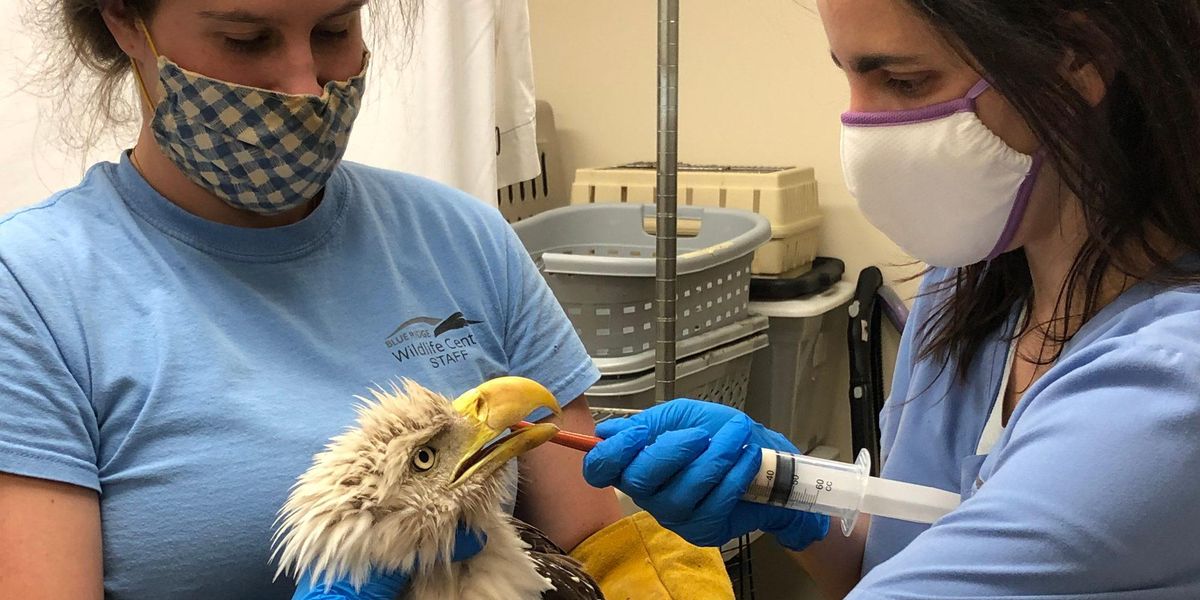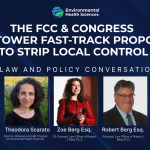
On Dec. 6 we published a 2-part series on lead ammunition on how the issue of lead ammunition and fishing gear is an under-recognized science denial problem.
The series called into question tactics from major firearm groups that are waging misinformation campaigns out of the Big Tobacco playbook. After combing through hundreds of claims from webpages, documents, and testimony, we outlined how these groups are employing the five categories of denialist techniques.
This series is consistent with the ethics of hunting. Scientists who urge the adoption of non-lead ammunition note that “Hunters and anglers have long been some of our most ardent conservationists and traditionally abhor the unnecessary killing of non-target animals.”
Lead poisoning of wildlife from ammunition is well-documented and “killing large numbers of animals in a manner that is often prolonged, painful and cruel.”
In the photo above you can see the aftermath of this toxic exposure. Dr. Jennifer Riley, Director of Veterinary Services at Blue Ridge Wildlife Center in Virginia, told EHN that even when lead-poisoned wildlife patients survive, it requires weeks of chelation therapy and supportive care.
“This includes being restrained for injections twice daily, being tube fed 2-3x per day, being repeatedly radiographed, and having blood pulled regularly for updated lead levels,” she told EHN.
The National Shooting Sports Foundation (NSSF) responded to our findings with an emailed response, some of which we included in the articles. After we published the series, they published a blog post attacking our reporting, ironically using many of the same techniques we outline in the series to begin with.
The fact remains that lead fragments contaminate hunted meat, leading to poisoning deaths of wildlife and putting humans at risk —especially fetuses, children, and pregnant women. This is the scientific consensus.
Below are some of our responses to other claims made in the blog.
On accusations that anyone who challenges the orthodoxy is accused as a “science denier.”
A science skeptic considers all evidence before coming to a conclusion. A science denier comes to a conclusion first and then rejects all evidence that disproves that conclusion. In this case, the scientific consensus, in consideration of the full body of evidence, has concluded that lead ammunition should be replaced with nonlead alternatives.
Cherry picking
In response to EHN’s evidence that the NSSF cherry picks the same study over and over and misrepresents its findings, the NSSF cherry picked the same study in this blog and misrepresented its findings. This particular study, which did not focus on people who use firearms for hunting, was addressed in previous reporting.
On being “anti-hunting”
In all of our reporting on lead ammo, we have never taken an anti-hunting position. There is a scientific consensus that lead ammunition should be replaced with nonlead alternatives for hunting, with scientists concluding “No rational deliberation about the use of lead-based ammunition can ignore the overwhelming evidence for the toxic effects of lead, or that the discharge of lead bullets and shot into the environment poses significant risks of lead exposure to humans and wildlife.”
Omitting a key wildlife principle
The NSSF touts their support for the North American Model of Wildlife Conservation, but they did not answer EHN’s request for their position on one of the seven principles of this model, “Wildlife can only be killed for a legitimate purpose.”
Unfortunately, the NSSF’s response in their blog, “The U.S. Fish & Wildlife Service also lists hunting as a wildlife management tool and outdoor tradition” is still not an answer to the question.
Dangers of lead
Any amount of lead is poisonous. The American Academy of Pediatrics recognizes that there is no safe blood lead level. Children absorb 4-5 times as much lead as adults from a given meal. Multiple studies have associated elevated lead levels with consumption of lead-contaminated meat.
It is not controversial to say that people should not eat small fragments of lead from car batteries (where the lead in ammunition often comes from). There are many other serious impacts of lead besides death from acute poisoning. Misleading families into the continued use of lead ammunition puts women at a higher risk of miscarriage, and puts children at risk of irreversible changes to their brains.
Moving forward
Lead is recognized worldwide as a toxic heavy metal, poisonous at low levels to humans and wildlife. We will continue to report on its use in lead ammo and fishing tackle.
Banner photo: Photo Credit: Blue Ridge Wildlife Center




